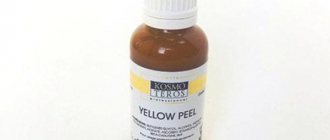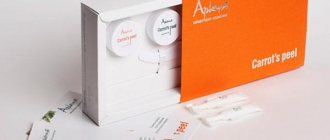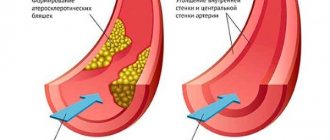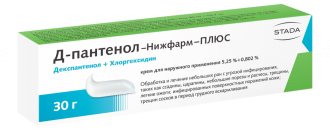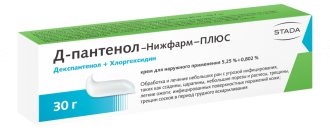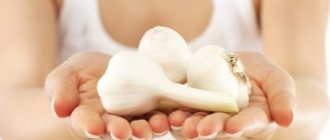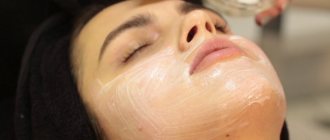An amazing product that delicately exfoliates the epidermis, revealing the beauty and youth of the skin again. Cream peeling Glyco A from isis pharma is a unique innovative product that completely renews the epidermis. It reduces the appearance of wrinkles and activates cell renewal. After peeling, the skin is filled with inner radiance, it is cleansed and smoothed. Glycolic acid in the peeling composition weakens the bonds between surface cells, enhancing the exfoliation effect. Penetrating into the deep layers of the dermis, it stimulates the synthesis of collagen and elastin.
Indications for use
The list of indications for use of the cleansing cream suggests that this is indeed a “magic” product.
- age-related changes (wrinkles, loss of elasticity);
- photoaging;
- dry skin;
- psoriasis;
- keratosis;
- pigment spots on the face, hands, and décolleté;
- melasma;
- post-inflammatory and post-traumatic traces;
- chloasma;
- freckles;
- oily skin suffering from acne, comedones, enlarged pores;
- folliculitis;
- cellulite;
- stretch marks.
An impressive list of indications for use confirms the possibility of using cream peeling both on the face and on the entire body.
Composition of the product
The main active ingredient of glyco a is 12% glycolic acid. In the natural environment, its content is especially high in sugar cane, sugar beets and unripe grapes. Acid has been used for medicinal and cosmetic purposes for more than 25 years. This is a real breakthrough in cosmetology. The acid molecule is so small that it easily penetrates into the deep layers of the dermis, moisturizes and nourishes it. The skin acquires the desired softness and smoothness.
The use of the product accelerates the biosynthesis of ceramides and prevents moisture loss from the skin. A moisturized dermis is less susceptible to aggressive factors, ages more slowly and loses elasticity.
Attention! The glycolic acid in the peeling is neutralized so that the pH of the product fluctuates between 3–3.5. This is the optimal value for the effective effect of the product on the face and body.
Acid in a concentration of 12% qualitatively exfoliates the surface layer of the epidermis, stimulates the regeneration of the dermis, influencing the stimulation of fibroblast activity.
The cream also contains stearic acid, a substance that reduces the surface tension of oils. It helps sebum to easily mix with water when using peeling and effectively remove it from the skin.
Peeling gel with glycolic acid 10% Profi 5ml, 120 ml | Pleyana
Pleyana – Profi Peeling gel with glycolic acid 10%. - This is a peeling containing glycolic acid, the anti-aging properties of which were known about half a century ago.
Glycolic acid is found in sugar cane and green grapes. Glycolic acid rejuvenates the skin and minimizes hyperpigmentation.
Rejuvenation of the epidermis is the main goal of glycolic peel therapy.
Using a 10% glycolic peel avoids epidermolysis (flaking, which usually occurs after procedures of this type) - it is a gentle peel, but very effective.
The upper layer of the epidermis is renewed, as well as the basement membrane and mesoderm, because Glycolic acid stimulates fibroblasts to actively produce collagen, elastin and glycosaminoglycans, resulting in increased skin turgor and elasticity, and the skin is significantly rejuvenated.
10% glycolic peeling is one of the most convenient and comfortable options for gentle peeling. Acting on collagen and elastin fibers, glycolic acid leads to their retraction (compression), which gives a good lifting effect. Thus, all layers of the skin are renewed.
glycolic peeling procedure is desirable and indicated for almost everyone with the aim of smoothing the skin texture, eliminating “sun wrinkles”, biostimulating and moisturizing the skin.
It is especially effective and timely to perform a glycolic peeling , in particular gentle glycolic peeling in the autumn-winter period, when the sun is not so active on the skin. The remarkable effect of the glycolic peeling procedure is achieved especially when used in programs for skin correction with the Pleyana collection together with Gommage for facial peeling .
Active ingredients: glycolic acid (10%), urea, aloe Barbados, echinacea extract, camellia, calendula, centella, lemon balm, hamamellis, tily, L-arginine, dihydroquercetin (flavocon).
Indications for the use of glycolic peeling:
- wrinkles
- scarring
- hyperkeratoses
- uneven skin texture
- skin dehydration
- seborrheic dermatitis
- superficial pigment spots
Directions for use: in the evening, apply the peeling gel to previously cleansed, moisturized skin, leave for 5-15 minutes and carefully rinse off the gel, avoiding contact with the eyes. Remove the remnants of the glycolic gel peeling with discs moistened with Plejana Tonic, then apply Pleyana Night Regenerating Cream or Pleyana Anti-Wrinkle Night Cream depending on your age-related skin characteristics.
Consumption of gel peeling with glycolic acid for 1 procedure (face) is 1.5-2 ml. One package (200 ml) - for 100 - 130 procedures (face). ph = 3.5
Many studies on the effects of glycolic acid of glycolic acid for 3-6 months helps fade fine lines, reduce deeper wrinkles, and lighten pigmented areas of the skin.
Cosmetics with glycolic acid , in particular Peeling Gel with glycolic acid “Plejana”, can be used even at a young age.
Glycolic acid regulates keratinization (keratinization) of the epidermis, richly moisturizes, and has antioxidant and anti-inflammatory effects. Glycolic acid stimulates the synthesis of collagen and glycosaminoglycans, and is a conductor of other biologically active components into the deep layers of the skin.
Contraindications to the use of glycolic peeling: herpes, exacerbation of acne, severe rosacea, increased skin sensitivity, the presence of neoplasms on the skin, recent skin injuries, individual intolerance to drugs , chronic dermatoses in the acute stage (eczema, demodicosis).
Glycolic peeling is a peeling with glycolic acid, the anti-aging properties of which were discovered almost half a century ago.
Products with glycolic acid have no age restrictions and can be used even by young girls.
Glycolic acid controls the process of keratinization of the epidermis, intensively moisturizes, has antioxidant and anti-inflammatory effects, stimulates the synthesis of collagen and glycosaminoglycans, and is a conductor of other biologically active components into the deep layers of the skin. Glycolic acid solution is a powerful antioxidant, prevents peroxidation processes in the skin, which allows peeling procedures to be carried out during active sun periods without fear of irritation and pigmentation.
The glycolic peeling procedure is absolutely painless and does not require a subsequent rehabilitation process .
Cosmetic effect of glycolic peeling:
- stimulation and renewal of facial skin cells
- increasing skin elasticity
- reduction of wrinkle depth
- concealing skin imperfections
- even out skin color
- skin hydration
- skin cleansing (destruction of excess sebum and dead cells)
To correct (and or prevent) skin aging (and or hyperpigmentation), the PLEYANA® complex is used:
For normal, oily and combination skin:
- Soft foam
- Phytobiotonic (mattifying or moisturizing - depending on the skin condition)
- Gommage for delicate peeling
- Phytobiotonic
- Peeling gel with glycolic acid (for 15 minutes)
- Tonic
- Serum is an alternative to Botox or “Basic cream with phytoestrogens.”
2 weeks - every other day, then 2 times a week.
For dry, sensitive skin:
- Cosmetic milk
- Phytobiotonic moisturizing
- Gommage (rolling method only!)
- Phytobiotonic moisturizing
- Peeling gel with glycolic acid for 10 minutes (sensitive skin – for 5 minutes!)
- Phytobiotonic moisturizing
- Regenerating cream “Intensive nutrition” or “Basic cream with phytoestrogens”.
In one day. For sensitive skin – once a week.
To correct seborrhea and acne:
- Soft foam with moisturizing complex
- Mattifying phytobiotonic
- Gommage (rolling method only!)
- Mattifying phytobiotonic
- Peeling gel with glycolic acid (for 15 minutes)
- Mattifying phytobiotonic
- "Basic cream with phytoestrogens."
2 weeks - every other day, then 2 times a week.
When performing glycolic peeling, you should avoid peloid therapy, contrast procedures, ultraviolet irradiation and heliotherapy.
Contraindications to the use of glycolic peeling: herpes, exacerbation of acne, severe rosacea, increased skin sensitivity, the presence of tumors on the skin, recent skin injuries, individual intolerance to drugs, chronic dermatoses in the acute stage (eczema, demodicosis).
Consumption for 1 procedure (face) – 2/2.5 ml
Attention! A mandatory test sample is recommended before use! (on the bend of the elbow)
Efficiency of use
The effect of smoothing and moisturizing the skin is noticeable immediately after applying Glyco A peeling. The cumulative effect appears after 2-3 courses of using the cream. You will have to wait 4-6 months. But this expectation is justified. Using Glyco A provides the skin with many benefits:
- reduces the thickness of the keratinized epidermis;
- improves appearance;
- tones and accelerates cell renewal;
- restores aging skin;
- increases elasticity, firmness and tension;
- stimulates collagen synthesis;
- smoothes wrinkles;
- removes age spots;
- improves the condition of dry skin;
- improves biodynamic properties.
Peeling is recommended for people aged 25 to 35 years. Belonging to this age range can ensure high effectiveness of the procedure aimed at preserving youthful skin.
Mode of application
Before use, it is recommended to cleanse the skin with a mild cleanser that has a neutral pH value.
The course of use of the product is 4 weeks. For the first two weeks, the drug is applied in the evening every other day, increasing the time of exposure of the cream. It is recommended to start at 1 hour. At the end of the second week, the peeling is left overnight. For the next 2 weeks, Glyco A is used every day. It is recommended to take a 30-day break between courses.
The best time for course application of peeling cream is from October to April. The use of scrubbing agents during the course is strictly prohibited.
Healing period
Using glycolic peeling at home does not exempt you from following post-procedure recommendations. On the contrary, attention to the condition of the skin should be increased to avoid undesirable consequences.
- The skin will be dry for several days, so it is necessary to apply a moisturizer. Coconut oil has good moisturizing properties.
- The use of additional exfoliating agents should be avoided for a week after the end of the course of application, since the top layer of the epidermis has already been removed.
- Excessive overheating of the skin should be avoided.
- Daily use of a high protection sunscreen is recommended.
- There may be some flaking, this is normal. The main thing is not to remove flaky skin and possible crusts on your own. Lubricate them generously with moisturizer and monitor for possible changes.
If there is even the slightest doubt about the correctness of post-procedural rehabilitation, then this is a reason to contact a cosmetologist or dermatologist.
Preparation and performance of glycolic peeling
By looking at the photos taken before and after glycolic peeling, you will see the decent results that this procedure can provide. To make this possible, our specialists make every effort. Thus, preparation for the procedure begins no later than half a month in advance and consists of the patient’s regular use of cosmetic preparations with a low content of AHA acids. This approach ensures the adaptation of the skin to the effects of a more concentrated composition, and also softens dead cells.
The procedure itself is as follows:
- Makeup removal and skin cleansing with a product containing hyaluronic acid and a gel containing 5% glycolic acid. In addition, the cosmetologist pays attention to equalizing the acid-base balance of the skin in order to achieve uniform penetration of glycolic acid;
- The application of glycol gel or solution is carried out using a special technology: evenly and quickly, excluding streaks, starting from the forehead, continuing with the nose, temples, down to the cheeks, chin and neck;
- Neutralization of the product is carried out in exactly the same sequence using a special alkaline product.
While the acid is on the face, the patient may experience burning and tingling. The cosmetologist monitors the condition of the skin and, if several spot redness or swelling occurs, neutralizes them. If there are more than three such areas, remove all the applied product. The duration of the session is from ten minutes to half an hour.
Why is neutralization needed?
Neutralization with an alkaline solution during chemical glycolic peeling helps prevent skin burns. After the neutralizer has been applied, the cosmetologist removes it and the remaining acid using cool water. It is important that the burning sensation stops after this. In order to soothe the skin and stimulate its regeneration, a serum with a moisturizing effect containing hyaluronic acid is applied to it, followed by special masks. These are followed by restorative agents with an anti-inflammatory effect.
Precautionary measures
Peeling cream is intended for external use. Contact with eyes should be avoided during application. If the product does get into your eyes, it is recommended to rinse them generously with cold water. If necessary, consult a doctor.
A tingling sensation and redness may occur. These symptoms are a sign of the cream’s action and disappear on their own after a couple of hours.
Contraindications:
- recent sun exposure to the skin;
- skin allergies;
- active herpes;
- pregnancy, breastfeeding;
- melanocytic nevus;
- autoimmune diseases;
- presence of wounds and abrasions in the area of planned use;
- severe forms of acne;
- taking certain medications (consultation with a doctor is required).
Important! Peeling cream Glyco A is phototoxic. Avoid exposure to sunlight on the skin for 2-3 hours after the procedure. When exposed to the sun, it is recommended to use sunscreen.
Advantages and disadvantages
Peels performed at home have a number of advantages over salon procedures:
- availability of purchase;
- Cream peeling can be used at home at any time, without worrying about making an appointment at the salon;
- the effectiveness of the drug, even taking into account the low dosage of acid;
- safe concentration of ingredients in creams for home use.
But there are also points that can alert inexperienced users of the peeling system:
- the use of chemical peels can damage the skin's melanocytes, leading to skin discoloration;
- possible skin infection;
- possible scarring;
- in rare cases, complications occur after the procedure - allergic reactions, swelling, erythema;
- high price.
Good news: it is quite possible to avoid unpleasant consequences or minimize risks by following the instructions for using the peeling cream.
general information
In cosmetology, peeling is a procedure for cleansing the skin of dead cells and various formations, such as crusts, pimples and areas of hyperpigmentation.
Exfoliation can be done using a variety of methods, but chemicals are the most commonly used. Typically, women need only superficial tissue cleansing for regular skin care, but skin rashes and other pathological conditions may require deep exfoliation. Peeling can be safely called a time-tested method of cosmetic care. It can be used to improve the appearance of integumentary tissues and treat dermatological diseases. Removing the outer layers of skin stimulates tissue rejuvenation and eliminates the symptoms of various ailments.
Main types of peeling:
- Mechanical peeling - removal of layers of tissue with solid particles and scrubs.
- Laser cleansing is the use of various instruments for non-invasive effects on tissue.
- Chemical peeling is the use of various substances to cleanse the epidermis. The mild acidic effect is great for caring for all types of skin.
The procedure can be performed in a professional salon or at home. For independent use, it is enough to buy a topical product, such as a gel, cream or scrub. However, high concentration acids can only be used under the supervision of a cosmetologist to prevent the development of complications.
Patient reviews
Patients note that the concentration of glycolic acid is insufficient for a visible effect. Although they note possible effectiveness for younger skin that has not previously been exposed to chemical peeling.
People who have used Glyco A note its sufficient moisturizing and anti-inflammatory properties and the absence of side effects. Reviews indicate lightening of age spots and post-acne marks after a course of use.
Rehabilitation period after glycolic peeling
The duration of the course is calculated individually. On average, it can include from 4 to 8 sessions, which are carried out with a break of one week to half a month.
After the procedure, patients note hyperemia, which is eliminated with a cold compress. Between procedures, it is recommended to use moisturizers and cosmetics that protect against exposure to UV rays, prescribed by your doctor.
If itching and crusts appear, you need to treat with antibacterial and steroid ointment and stop using medications containing retinol and glycolic acid.
